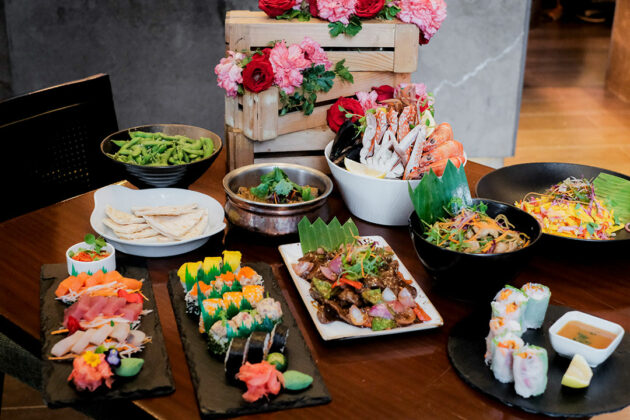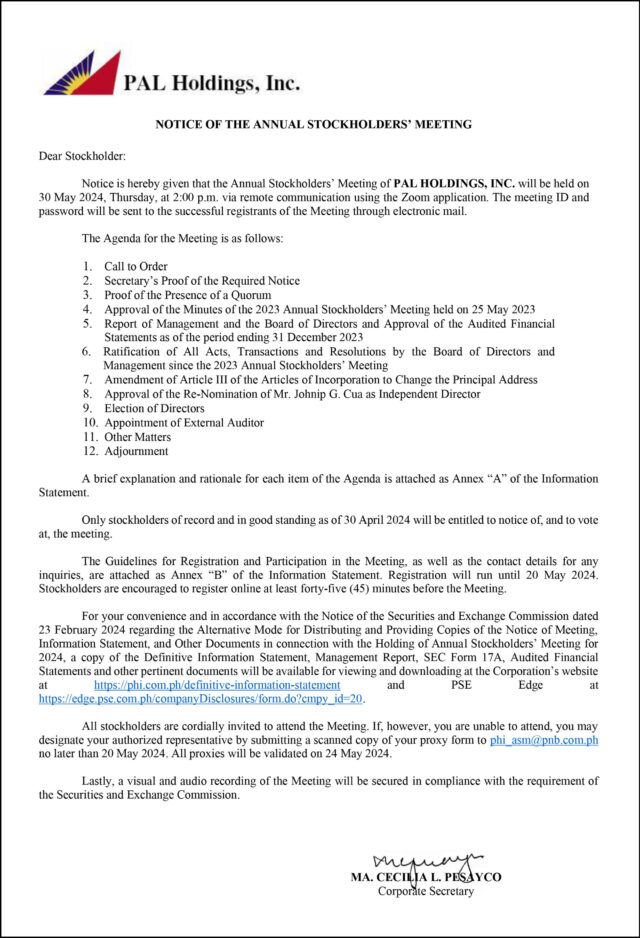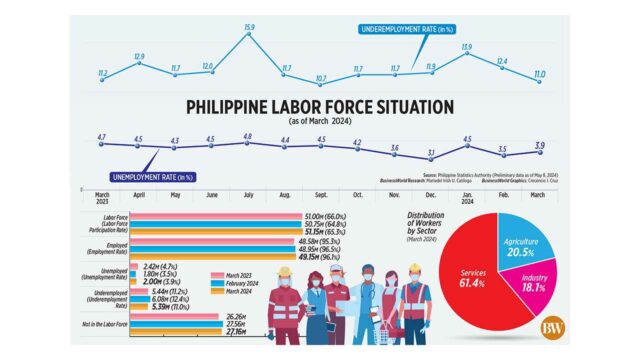Back to Investment: Is the World Bank running out of ideas?
(Part 2)
WE ARGUED in the first part of this article (https://tinyurl.com/292e53k3) that the evidence indicates that investment is not the magic elixir that the World Bank study on investment accelerations (World Bank’s Global Economic Prospects publication of January 2024, entitled The Magic of Investment Accelerations (https://tinyurl.com/yxmeg4ve) claims, despite the many correlations that the authors documented.
We believe the analysis would have made more sense with manufacturing, on the grounds that aggregate growth is ultimately related to the rate of expansion of the sector with the most favorable growth characteristics. There is a lot of historical work and empirical evidence to suggest there is something special about industry, particularly manufacturing. Indeed, there appears to be a close empirical relationship between the level of per capita income today and the share of manufacturing in GDP in the past, as well as between industrial growth and the growth of overall GDP. It is through the growth of manufacturing that investment matters: a new plant is an investment.
Given the discussion in recent years about the importance of services, this could have been the other variable to analyze. Recent research seems to indicate that some modern services have the production characteristics, i.e., static and dynamic scale economies, to induce fast growth. The relationship between the growth of GDP and the growth of services is strong but there is reason to believe that the direction of causation may be the other way around, from the growth of GDP to service growth since the demand for many services is derived from the demand for manufacturing output itself.
We also believe there are good reasons to think that the magic variable could be exports, the only true component of autonomous demand in an economy, in the sense that their demand emanates outside the economy. On the other hand, the major part of consumption and investment demand depends on the growth of income itself. Exports are the only component of demand that can pay for the import requirements of growth. Surely an economy can experience consumption-led, investment-led, or government expenditure-led growth; but each of these components of demand has an import content. If an economy does not obtain sufficient export earnings to pay for its imports (more precisely, the import content of other components of expenditure), then demand will have to be constrained. For this reason, exports play a very significant role because experience shows that countries, especially developing countries, need to maintain balance-of-payments equilibrium in the long run. Otherwise, they run into a crisis. This implies that exports not only have a direct effect on demand, but also an indirect effect by allowing all other components of demand to rise faster than otherwise would be the case.
Finally, exports matter because recent work shows that the sophistication of a country’s export basket is a good predictor of its future growth. Asian firms moved up in the development ladder, and consequently produced more sophisticated products, by slowly accumulating productive capabilities. Exporting was a means of “testing” whether firms and sectors could compete in the global marketplace by subjecting them to global competition.
Once it has been established that the key drivers of growth are manufacturing and exports, one can then argue that investment matters, both at the firm (machinery and equipment) and at the aggregate (exports require infrastructure in the form of roads and ports) levels. Surely investment has to be part of the equation, but it is not the true underlying cause of growth.
Manufacturing and exports are what the Philippines desperately needs. The country never industrialized (hence its manufacturing employment share is very low) and it is not a powerhouse exporter. These two are the two magic variables that will trigger the investment that the country needs, be it specific equipment or large-scale infrastructure.
Is the Philippines on the right track on both manufacturing and exports? If we look at exports, definitely it is not. Exports of goods and services represented just 27% of GDP in 2023, whereas in the ASEAN peers this share is well above 50%: in Thailand 65%, and 94% in Vietnam. The level of sophistication of these exports is even more important, as this is what will ultimately play a critical role in securing higher returns — higher real wages — due to the high in-come-elasticity of demand of many manufactures. Although the Philippine export basket contains some relatively sophisticated products, it also contains many simple agricultural products and manufactures. Sure, it exports electronic components, but we know that it is just assembly, part of a value chain.
Let us do not forget that exports of goods are an indicator of what is happening in the manufacturing sector. In the Philippines, manufacturing gross value-added growth had been decelerating even prior to the pandemic (removing the statistical over-shooting effect caused by the year 2020). Whereas during 2010-2018 the sector enjoyed robust and sustained growth of 6% (year-on-year average), the growth rate during 2019-2023 was only 1.8% (year-on-year average).
Is the Philippine Government — the current and the previous administrations — aware of the importance of manufacturing and exports for the country’s short- and long-term growth? No doubt it is, but it falls into the mistake of thinking that other issues or sectors are equally important, and that these may produce similar gains in terms of development. Just read the Philippine Development Plan 2023-2028.
A major mistake — in our opinion — is the chosen set of actions/indicators to foster manufacturing and exports. As an example, the Philippine Development Plan 2023-2028 does recognize the need to revitalize industry (Chapter 3) and sets a wide number of “very ambitious” — rather aspirational — targets. In the case of manufacturing, the ambition is to sustain a yearly gross value-added growth rate of 8-9.5% until 2028. Just for reference, the figure for 2023 was 1.3%. There is definitely a lot to do until 2028.
In addition, the “obsession” with the country’s ranking in international qualitative indexes of Doing Business completely misses the focus on serious and effective industrial policy. Cutting red tape and accelerating companies’ registration process is definitely a relief, but no company decides to start manufacturing because the number of days to register has dropped.
A recent significant industrial policy milestone is the passing of the Tatak Pinoy Act. This law, proposed by Senator Sonny Angara and signed into law by President Ferdinand Marcos, Jr. on Feb. 26, aims to increase the diversity, sophistication, and quality of Filipino products leading ultimately to more and better exports. We cannot be more aligned with this leading policy. Now come the big challenges of implementing it and making this ambition a reality. We welcome the inclusion of four private sector representatives in the Tatak Pinoy Council, the body that shall draft and monitor the multi-year Tatak Pinoy Strategy. One of the characteristics of this Government is the belief in establishing partnerships with the private sector as a leverage for development. Whereas we may not be so thrilled with this overarching policy for the provision of certain public services, we firmly believe that this is the only way forward in the case of industrialization.
Without strong collaboration between the private and the public sectors, the Philippines will never truly industrialize. However, it is also important to define what kind of collaboration is established. Whereas private compa-nies are absolutely free and independent to invest in the businesses or sectors that they may find more financially interesting — they are in the good economic sense “profit maximizers” —, it is the Government that has to have a clear economic long-term vision about the sectors it wants private companies — domestic or foreign — to invest in. Leaving industrialization to “market dynamics” will not work, as development is a collective effort — among competitors — that needs public coordination and support.
Finally, another industrial policy misunderstanding is the “obsession” with Foreign Direct Investment (FDI) as the “magic wand” to spur exports. Being in favor of easing foreign investment in all sectors for private companies
(state-owned companies are a different story) for the benefits it entails through increased competition, industrialization will mostly be driven by domestic corporations. No country (with exceptions like Singapore due to size) has industrialized without developing a wide base of domestic industrial companies. Surely at the micro level, we will find certain foreign companies that have specific products or technologies that are critical for a certain sector to develop, at least in the short- to medium-term. We believe in the benefits of this company-targeted approach for FDI.
Summing up: We have argued that the magic recipe for the Philippines lies in developing a manufacturing sector and in exporting. Investment is an intermediate variable, and it is investment in these two areas that matters. The six-million-dollar question is: do we have the firms to do this?
Jesus Felipe is distinguished professor of Economics, De La Salle University while Pedro Pascual is a board-certified economist with Spain’s Ministry of Economy and a partner at MC Spencer (Philippines).























